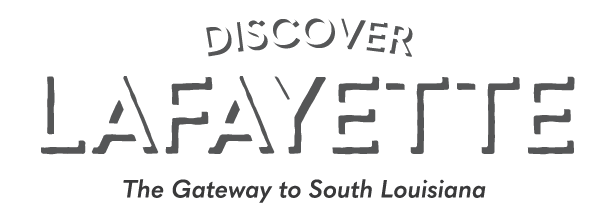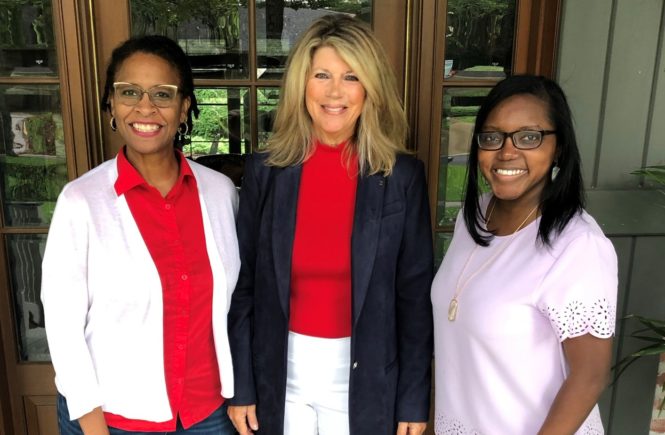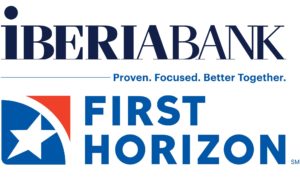Podcast: Play in new window | Download (Duration: 1:14:18 — 102.0MB)
Tessa Brown and Mechelle Roberthon joined Discover Lafayette to discuss how workplace leaders should lead. Through wit and humor, they share their expertise in how managers can best engage with frontline workers to set up companies for success. From the pandemic’s impacts on work-life to positive employee-employer relationships, Brown and Roberthon are expert human resource and talent development experts.
Lafayette native and LSU grad Tessa Brown serves as the Human Resources manager for CCI Piping Systems and has a strong passion for helping small businesses . “There’s nothing like a family-owned business,” Brown said, and she loves working with the Cazayoux family who owns CCI Piping. Brown enjoys volunteering with the Acadiana Society for Resource Management (“SHRM”), as well as the SHRM statewide council.
Vice President and Director of Talent Development for Home Bank, Mechelle Roberthon received her bachelor’s degree from the University of Louisiana at Lafayette, majoring in arts and humanities and behavioral sciences. “I am a diehard Rajun Cajun fan and alum!” Roberthon has a Master of Science in training and performance improvement from Capella University and is pursuing a doctorate of education in learning and organizational change from Baylor University. She moved to Lafayette from Alexandria 15 years ago to attend UL-Lafayette and that’s when she met her future husband. “We are never leaving South Louisiana, we’re just not leaving,” Roberthon said. Fresh out of college, her start was in the non-profit sector. Whether it’s working with Acadiana Shelter for Girls or Big Brothers Big Sisters of Acadiana, Roberthon enjoys helping others succeed. Through this, she quickly found her calling for talent development. Along with her work for Home Bank, she’s involved with The Association of Talent Development (formerly known as the American Society of Training and Development).
Brown and Roberthon began working together at a corporate training center in 2014, where Brown was the Human Resources Manager and Roberthon was the Talent Development Instructor. They quickly realized that they shared a similar passion for human and talent development. “People are people…the company is made up of people, no matter what the size,” Brown said, “Once you develop that talent, the sky is the limit.” Brown’s passion is working with people and believes that if employers can build a great workplace, a great place to go every day, “think of all the amazing things you can do!”
“Human Resources and Talent Development skills are transferable to any industry, which is why I can move from healthcare to banking and Tessa can move from corporate development to manufacturing, because people are people. My personal tagline is ‘I develop people who are responsible for developing the business,” Roberthon stated. She further noted that businesses can’t exist without the people who make the brand valuable and explained that it just takes one person in a company of any size to make or break the company’s brand and reputation. It’s critical to develop the talent in workers who stand on the front lines representing the company and interacting with the consumer. And, a good working environment will positively enhance the mood of a person as they leave the workplace and go home to family and friends (and the dog!). To be effective, the creation of a positive workplace will include intentional and meaningful engagement and development of the employees, coming from employers who are genuinely interested in the best environment and work culture for their staff.

“It’s critical to develop the talent in workers who stand on the front lines representing the company and interacting with the consumer. And, a good working environment will positively enhance the mood of a person as they leave the workplace and go home to family and friends (and the dog!). To be effective, the creation of a positive workplace will include intentional and meaningful engagement and development of the employees, coming from employers who are genuinely interested in the best environment and work culture for their staff.” Mechelle Roberthon
When asked about the impact of employees working from home during the Pandemic, both spoke of how employers were challenged by the abrupt need to manage employees who were offsite. Pre-Covid, many employers had not developed the right management tools for in-person workers so they had no idea how to manage remotely. The offsite work environment only exacerbated management issues that were always there. The issues employers complained of, such as home-bound pandemic employees slacking off and being unresponsive, were prevalent before the pandemic, but less obvious because at least you could track down the employee in the building. “Judy may have always been playing Solitaire at work, you just didn’t know it.” The only difference with the remote work environment of COVID was the lack of in-person engagement. Brown explained, “The problem is not, ‘Do we really need a building, but how do I make sure that I am engaged with my people and I know that they engaged with their work,” Brown explained.

“Pre-Covid, many employers had not developed the right management tools for in-person workers so they had no idea how to manage remotely. The offsite work environment only exacerbated management issues that were always there. The issues employers complained of, such as home-bound pandemic employees slacking off and being unresponsive, were prevalent before the pandemic, but less obvious because at least you could track down the employee in the building. ‘Judy may have always been playing Solitaire at work, you just didn’t know it.’ The problem is not, ‘Do we really need a building, but how do I make sure that I am engaged with my people and I know that they engaged with their work?” Tessa Brown
Employers can still effectively engage with their employees even if they retain a virtual workplace. The environment may change, but active engagement should still exist or even improve. “I show companies how to use the same in-person engagement techniques and pivot them for virtual,” Roberthon said. She stated that aspects of virtual work life don’t have to be drastically different when managing employees remotely.
Employees come in all shapes and sizes and have different needs, i.e., some need micromanaging and want frequent feedback from their boss while others prefer autonomy. Virtual work or not, these needs don’t disappear just because they’re working remotely. “You have to know what your employees need….and do the things that are practical,” Brown said. Roberthon mentioned how some employees thrive at home working independently, while conversely, some need the bustle of work life. Just as employers need to adjust their ideas about work engagement, so do their employees.
Brown stated that virtual working environments worked best when employers let go of assumptions about the way their employees would be able to manage during the COVID shutdown. Some employees are single mothers without a support system and unable to afford full-time childcare when schools were closed. Not every employee had the technical equipment or adequate internet service required for the virtual working world. Successful transitions worked when employers and employees tapped into support systems, and employers were able to assist with the payment of childcare, work-related equipment, etc. Of course, some employers couldn’t afford to help their employees as much as other businesses. Brown mentioned that it was patience and grace periods that allowed for employees to transition. At the same time, COVID could not be allowed to be an excuse for slackers who didn’t pull their load.
When asked how employers can set the appropriate work-environment tone, Roberthon said that employers should tap into human development recourses. Businesses can expand by having coherent and consistent codes enforced throughout their company. Whether it be dress codes, or how relaxed the company environment is, the expectations set by employers should be spelled out and crystal clear. Roberthon said that leaders should have company policies in writing to best set their employees up for success. “What used to work great, where you thought you were communicating well, where you thought people were hearing the message, you may have had some turnover in staff and you will need to continually reinforce and remind the employees of expectations,” Brown said. Ex: “Your workday starts at 8 am and ends at 5 pm. Do you understand what that means? At 8:02 am you can not be heating up your breakfast.” Clarity will set up your employees for success. Attire, work culture, and timeliness vary from company to company, so don’t assume your employees will automatically know what you expect. A fun way to explain the rules is also to have the CEO discuss the rules in a fun, yet meaningful video that explains the company’s culture.
Brown and Roberthon also mentioned how important it is for top leaders to confer and converse with their frontline employees. If the CEO meets with managers, the managers should communicate the message to their charges who work directly with the public. It’s also useful for top management to get input from the frontline about ideas to improve the company’s performance. The frontline workers are like the players on the field taking all the hits. They hear about how competitors are doing things better or what is wrong with your company’s product, but they have no control over decisions made by management. Typically leaders speak with the bosses and not the frontline. “Ask your players, why not ask them?” Roberthon said. No company can truly be successful without checking in with its employees. However, remember that your people need to feel safe in their work environment and have to feel secure about their position if they do open up with you when asked for their opinion. Physiological safety is massively important to set employees and their companies up for success.
Emotional intelligence by Daniel Goleman is a great resource for people skills, learning to being aware of how you feel and how others feel, in order to learn how to communicate in a respectful way. IQ is not an indicator of success if the person doesn’t have people skills and read a room or read a person’s face to see if they have been offended. You can learn emotional intelligence and give people the grace they need and deserve.
To learn more from Tessa Brown, check out her Twitter feed or reach out to her on LinkedIn here. To learn more about Mechelle Roberthon, visit her website https://www.mechellerob.com/ or at LinkedIn. They both encourage you to reach out to them.




